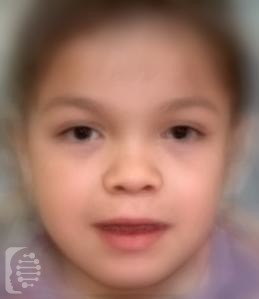What is Mannosidosis, Alpha B, Lysosomal (MANSA)?
It is a rare genetic disorder that affects multiple organs and systems of the body. Common symptoms include skeletal abnormalities, characteristic facial features and intellectual disability.
Symptoms vary in their severity from mild to more severe. The early-onset form of the syndrome means infants generally do not survive past childhood. Those with a more mild form of the syndrome generally present with symptoms later, and they progress more slowly. Individuals with the less severe form of the syndrome tend also to have a higher life expectancy.
The condition occurs in 1 in every 500,000 live births globally.
This syndrome is also known as:
Alpha-mannosidase B Deficiency; Alpha-mannosidosis; Lysosomal Alpha-D-mannosidase Deficiency
What gene change causes Mannosidosis, alpha B, Lysosomal (MANSA)?
Changes in the MAN2B1 gene are responsible for the syndrome.
The syndrome is inherited in an autosomal recessive pattern.
Autosomal recessive inheritance means an affected individual receives one copy of a mutated gene from each of their parents, giving them two copies of a mutated gene. Parents, who carry only one copy of the gene mutation will not generally show any symptoms, but have a 25% chance of passing the copies of the gene mutations onto each of their children.
What are the main symptoms of Mannosidosis, Alpha B, Lysosomal (MANSA)?
Characteristics facial features of the syndrome include a large head, prominent forehead, low hairline, rounded eyebrows, large ears, flattened nose bridge, protruding jaw, widely spaced teeth and a large tongue.
The main skeletal abnormalities related to the syndrome include a reduced bone density, thickening of bones at the top of the skull, abnormalities of the bones in the spine, knock knees and a general deterioration of bones and joints.
The syndrome may also cause symptoms relating to movement and the muscles. This can include ataxia, which is a difficulty in coordination movements, muscle weakness, and motor skills delay. Speech and language development may also be affected and delayed.
Other medical conditions or issues related to the syndrome include an enlarged liver and spleen, a buildup of fluid in the brain, hearing loss and cataracts.
It is not uncommon for some affected individuals to suffer from psychiatric symptoms including depression, anxiety, and hallucinations. These may be triggered by stress or stressful situations.
Possible clinical traits/features:
Hypertelorism, Hypertrichosis, Kyphosis, Hyperreflexia, Decreased circulating antibody level, Impaired smooth pursuit, Cognitive impairment, Hallucinations, Growth delay, Global developmental delay, Gait ataxia, Gingival overgrowth, Depressed nasal bridge, Broad forehead, Hernia of the abdominal wall, Hearing impairment, Opacification of the corneal stroma, Hepatomegaly, Mandibular prognathia, Intellectual disability, Inguinal hernia, Increased vertebral height, Increased intracranial pressure, Limb ataxia, Macrotia, Muscular hypotonia, Macroglossia, Low anterior hairline, Spasticity, Type II diabetes mellitus, Thoracolumbar kyphosis, Progressive retinal degeneration, Spinocerebellar tract disease in lower limbs, Vacuolated lymphocytes, Recurrent respiratory infections, Splenomegaly, Thick eyebrow, Frontal bossing, Midface retrusion, Synostosis of joints, Macrocephaly, Spondylolisthesis, Skeletal dysplasia, Thickened calvaria, Recurrent bacterial infections, Scoliosis, Dysarthria, Dysostosis multiplex, Coarse facies.
How is Mannosidosis, Alpha B, Lysosomal (MANSA) diagnosed?
To find out if someone has a diagnosis of Mannosidosis, Alpha B, Lysosomal (MANSA), it is important to have a consultation and evaluation with a clinical genetic specialist. Specialists may also suggest specific genetic testing or other types of tests to help reach a diagnosis. FDNA’s AI technology can help speed up the diagnostic process by analyzing facial features and other health information.
Evaluation
Don’t let your questions stay questions
Ease your concerns, gain a better understanding of your child’s development process, and connect with medical professionals in your area.

